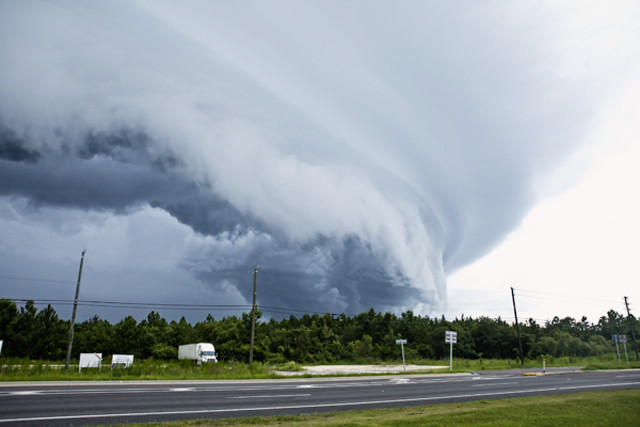
by Paul A.T. Higgins Thursday, July 31, 2014

Credit: ©Shutterstock.com/JohnWollwerth
Straightforward scientific conclusions about climate change often fail to reach policymakers and the broader society. Climate scientists need to revise their communication strategies to close the vast gap in understanding that persists between what is known about climate change and how the public perceives the issue.
For example, the recent assessments of the Intergovernmental Panel on Climate Change (IPCC) confirm that climate is changing, that people are causing climate to change, that human-caused climate change creates serious risks for society, and that there are a wide range of policy responses that could help manage societal risks. These overarching conclusions result from decades of research and are widely accepted by experts familiar with the scientific evidence. Nevertheless, most, if not all, of these findings remain contentious within broader society. This gap in understanding creates a major challenge for climate change risk management.
Consider the IPCC’s description of climate change impacts and their likelihood of occurrence. The IPCC describes scientific conclusions using 10 likelihood categories spanning from “exceptionally unlikely” to “virtually certain.” Each category encompasses a specific probability range — for example, “very likely” denotes a greater than 90 percent chance, “likely” describes probabilities assessed to be at least 66 percent, and “about as likely as not” means a 33 to 66 percent chance.
For anyone willing to dive into the IPCC’s assessments, these 10 categories are extremely useful. Each represents a relatively narrow range of probability, which makes it easier to characterize and understand specific risks. But the probability classifications are not intuitive and require considerable upfront effort to understand, creating a barrier for anyone new to climate science. Given the many compelling claims on our time and attention, devoting the time and energy needed to understand the terminology may not seem worth it. So we need to develop language that makes climate science more approachable.
A recent study from the American Meteorological Society Policy Program concluded that the use of a streamlined classification system to complement the IPCC’s more detailed categories could create an effective point of entry for those who are relatively new to climate change. Our study adapted the language used to describe petroleum reserves to classify climate risks into a small number of more intuitive and easily understood categories: “possible,” “probable,” and “effectively certain.”
“Possible” impacts are those for which the likelihood is unknown or thought to be less than 50 percent. “Probable” describes impacts that have greater than a 50 percent chance of occurrence. “Effectively certain” impacts have a chance of occurrence that is assessed to be at least 95 percent.
For example, it is “effectively certain” that: higher greenhouse gas concentrations will warm the climate system relative to lower concentrations, changes in climate will change weather patterns, a warmer climate will cause heat waves to become more frequent and/or intense, average sea-level and storm-surge heights will increase with warming, and climate changes will cause shifts in the distributions and characteristics of biological systems (among other impacts).
It is “probable” that warming will cause increases in the intensity of some severe weather events such as tropical cyclones, floods and droughts.
It is also “possible” that human-caused warming will cause disruptions to key planetary-scale life-support services. Disruptions could include major and widespread impacts to physical systems such as existing weather patterns, coastal boundaries, permafrost and snow pack; biological systems and the goods and services they provide such as crop pollination, purification of water, soil and air, pest control, nutrient cycling, and flood and drought prevention; and social institutions like agriculture, water resource management, transportation infrastructure and public health.
The use of streamlined categories like these can also work well for communicating risks and opportunities associated with any geophysical hazard such as extreme weather events, solar storms, floods and droughts, wildfire, earthquakes and tsunamis.
To be effective and actionable, scientific information must be communicated clearly, accurately and meaningfully for policymakers and the public. After decades of intensive research, climate scientists have discovered a great deal about the climate system, including much about the risks associated with our ongoing emissions of greenhouse gases and our options for risk management. However, much of what is known and understood has proven difficult to communicate effectively outside of the scientific community.
Our communication strategies need to recognize the breadth of background and interest among potential audiences. Characterizing risks in easier-to-understand terms could help create an effective point of entry for the large fraction of the public that remains largely unaware of the basics of climate change science and risk management.
© 2008-2021. All rights reserved. Any copying, redistribution or retransmission of any of the contents of this service without the expressed written permission of the American Geosciences Institute is expressly prohibited. Click here for all copyright requests.